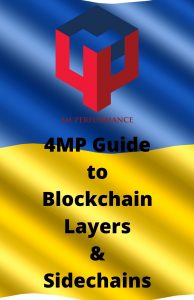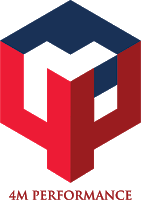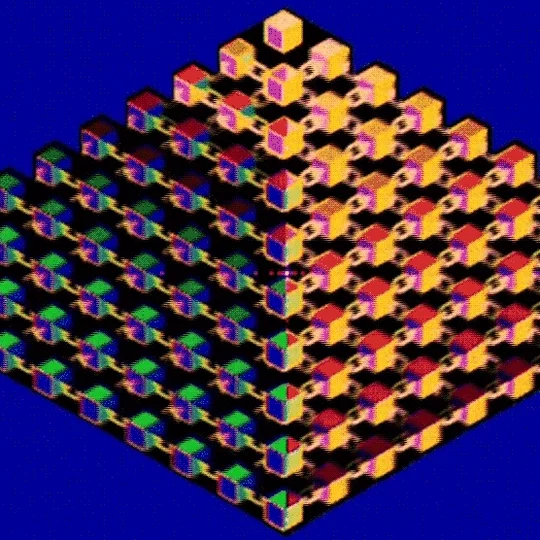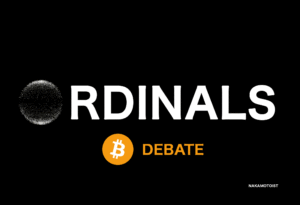
The Ethereum blockchain is currently the home of popular crypto apps that power the DeFi, games, NFTs, and a variety of digital assets that grows each day. But while all of this activity is great for Web3 and the Metaverse the downside is this volume has created massive traffic on the platform and with it massive fees to run it.
In response, cheaper and faster alternatives, such as Polygon, Avalanche, and Terra have emerged to compete with Ethereum. This begs the question: if smart-contract-based blockchains are to grow to support finance and other Web3 applications for billions of users, some sort of scaling solution is requisite.
The purpose of this 4M Performance Guide is to explore the ways the blockchain community is addressing this scaling issue.

What’s The Goal?
The major goal is to increase the number of transactions (openly accessible smart contracts) that can be handled by a platform while retaining sufficient decentralization, ie. the process not being controlled by a few powerful central entities.
To fix the problems, two approaches are being used. First, build new networks competitive to Ethereum, as mentioned above, to handle more activity, and second, build complementary networks that can handle the excess capacity. These take the form of several alternatives:
- Layer 1 blockchains: To compete with Ethereum
- Sidechains: Somewhat complimentary to Ethereum
- Layer 2: Complimentary to Ethereum
While each differs, their goal is the same: to allow users access to networks without paying huge fees or experiencing long transaction wait times. In short, there has risen a deep and diverse landscape of direct Ethereum competitors – and many more on the way.
LAYER 1s
Ethereum is a Layer 1 blockchain. It is an independent network that secures user funds and executes program designs that enable higher transaction throughput and lower fees BUT with increased centralization
In a few months Layer 1 networks have gone from $0-75 billion in aggregate value. The current group includes Solana, Avalanche, Terra, and Binance. All of these companies compete vigorously for developers and users – but because they do not use Ethereum’s structure which makes it easy to build and use applications they run into difficulty. To combat this, they use a scheme called EVM Compatibility (Ethereum Virtual Machine).
EVM is the ‘brain’ that performs computation to make transactions happen. By making their networks compatible with EVM, developers can easily deploy their existing Ethereum applications to NEW Layer 1s by copying and pasting their code. Users can easily access EVM compatible Layer 1s with their existing wallets, making it simple for them to migrate.
Interoperable Chains: In a variation of Layer 1s are networks like Cosmos and Polkadot which, instead of building new stand-alone chains, build standards that let developers create application-specific blockchains capable of talking to each other. This can allow tokens from say gaming blockchains to be used within applications built on a separate blockchain for social networking. There is currently over $100 billion sitting on these types of interoperable chains.

Sidechains
The distinction between Sidechains and new Layer 1s is blurry. Sidechains are very similar to EVM-compatible Layer 1s, except that they are special purpose-built to handle Ethereum’s excess capacity, rather than compete with it, and are closely aligned with the Ethereum community.
Axie Infinity is an example of a Sidechain. Axie developed Ronin, an NFT-based game originally built on Ethereum but high ETH fees made playing the game extremely expensive. So the Ronin sidechain was built to allow gamers to move their NFTs and tokens from Ethereum to a low fee environment – making the game affordable to many more users and a subsequent explosion in Ronin’s popularity to over 3 million daily users.
Polygon is another sidechain but unlike Ronin which is application-specific, it is more general in purpose. Polygon’s POS (proof-of-stake) sidechain is the industry leader with over 100 DeFi applications including popular apps like Aave and Sushiswap.
Polygon doesn’t look much different from an EVM Layer 1 but it’s built as part of a framework to scale Ethereum rather than compete with it. With transaction fees of less than a penny, the Polygon team sees a future where Ethereum remains the dominant blockchain for high-value transactions and that value storage, while everyday transactions move to Polygon’s low-cost sidechain.
Layer 2 (Rollups)
Layer 1s and Sidechains both have a big challenge: securing their blockchains. To do so, they must pay miners or proof-of-stake validators to verify and secure transactions, and this is a very complex and challenging task that each network is responsible for indefinitely.
Enter Layer 2s. They do not need their own validation because they are part of Ethereum. And Ethereum likes this alternative and states that their next version of Ethereum (now in the works) will be “rollup-centric”.
Layer 2s are called rollups because they ‘rollup’ or bundle transactions together and execute them in a new fashion before transmitting them to Ethereum. So, rather than having Ethereum process 1,000 transactions individually (very expensive), the computation is offloaded on a Layer 2 rollup before submitting the results back to Ethereum (very inexpensive). The question then remains, how does the Ethereum blockchain know that the offloaded data is accurate and valid? This shortfall is addressed by two types of rollups: Optimistic and Zero-Knowledge (ZK) Rollups.
Optimistic Rollups
When submitting data back to the Ethereum blockchain, Optimistic rollups ‘optimistically’ assume that the data is valid. So, the operators of the rollups are allowed to post any data they want and just assume it’s correct and incorporate a mechanism whereby anyone (any node) watching can call out fraud. In the event that one of these watchers can mathematically prove that fraud occurred, the rollup reverts the fraudulent transactions and penalizes the user, and rewards the watcher. Arbitrum & Optimistic Ethereum are two projects that use the optimistic rollup protocol. Once mature, optimistic rollups offer anywhere from a 10-100% improvement in scalability.
Zero-Knowledge (ZK) Rollups
Where the Optimistic rollups assume the transactions are valid and leave it to others to prove fraud, ZK rollups do the work of actually proving to the Ethereum network that transactions are valid.
Along with the bundled transactions, they submit what is called validity proof to the Ethereum smart contract. Validity proofs let the Ethereum network verify that the transactions are valid, making it impossible for a user to cheat the system. But, while providing instant settlement and no withdrawal time for watchers is great, ZK rollups are not without faults. Generating proofs is computationally intensive. Also, the complexity surrounding validity proofs makes it more difficult to support EVM compatibility.
Because of this, optimistic rollups have been first to market and are much more capable of solving the scalability issues of the Ethereum chain, but ZK rollups may, in the longer term, be a superior solution. The real benefit of the ZK rollup is that they are fully compatible with EVM and thus capable of supporting popular general applications without the withdrawal delays of optimistic rollups.
Ethereum likes the ZK rollups scalability solution and believes that in conjunction with Ethereum 2.0 will have the ability to handle hundreds of thousands of transactions per second without compromising on security or decentralization.
The Future
For sure, scaling solutions are necessary if smart contract platforms are to scale to billions of users. This is very uncertain at the moment; however, there are very knowledgeable people and teams working on solving these most challenging problems. Web3 is the digital frontier and what lures the best and brightest to its door.




0 Comments